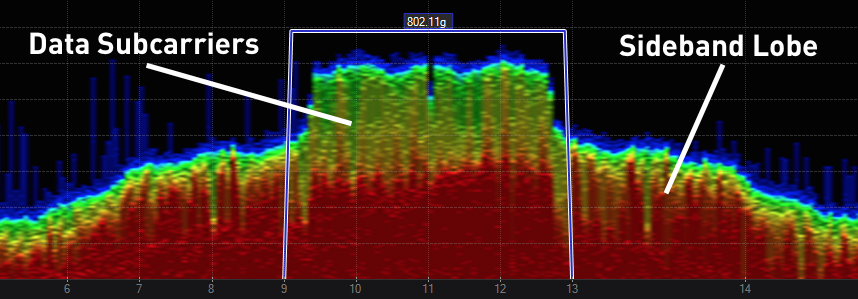Interferenciák
2.4 GHz
Napjainkban a Wifi, a Bluetooth/BLE és a Zigbee protokol is a 2.4 GHz-es tartományt használja. Erről mesél a következő 3 ábra:
- https://www.researchgate.net/figure/BR-EDR-BLE-IEEE-802154-and-IEEE-80211-sharing-24-GHz-frequency-band_fig14_328843842

- (a) BR/EDR (Bluetooth Basic Rate / Enhanced Data Rate)
- (b) BLE (Bluetooth Low Energy)
- (c) IEEE 802.15.4 (Zigbee)
- (d) IEEE 802.11 (Wifi)
sharing 2.4 GHz frequency band.
- https://www.researchgate.net/figure/Spectra-of-multiple-wireless-technologies-in-the-24-GHz-ISM-band-The-colors-indicate_fig4_326598630

Spectra of multiple wireless technologies in the 2.4-GHz ISM band.
The colors indicate:
- light-green for WiFi bands
- red for BLE's advertising channels 37, 38 and 39
- light-blue for BLE's and ZigBee's data channels which overlap with WiFi channels
- and dark-blue for BLE's and ZigBee's data channels which do not overlap with WiFi channels (and are free from WiFi interferences).
- https://www.metageek.com/training/resources/zigbee-wifi-coexistence.html

WiFi's three non-overlapping channels (1, 6, and 11) use the exact same frequencies as ZigBee channels 11-22.
ZigBee channels 25-26 aren't immune either, because they can be caught in WiFi channel 11's sideband lobe (see Sideband Lobes below). ZigBee channel 26 is usually relatively unaffected by WiFi, but many ZigBee devices do not support it.
An 802.11g/n signature in the spectrum has two components:
- The 20 MHz „square” section that contains the data subcarriers
- Sideband lobes on each side, which are a normal side effect

Sideband lobes might not carry WiFi data, but they are fully capable of drowning out ZigBee transmissions.
Sok Zigbee kütyü a 11-es csatornát részesíti előnyben / csak azon képes kommunikálni…
Így az esetleges interferencia minimalizálása érdekében érdemes a 2.4 GHz-es WiFi-t:
- 20 MHz-es sávszélességgel
- 6-os, vagy afölötti csatornára állítani.